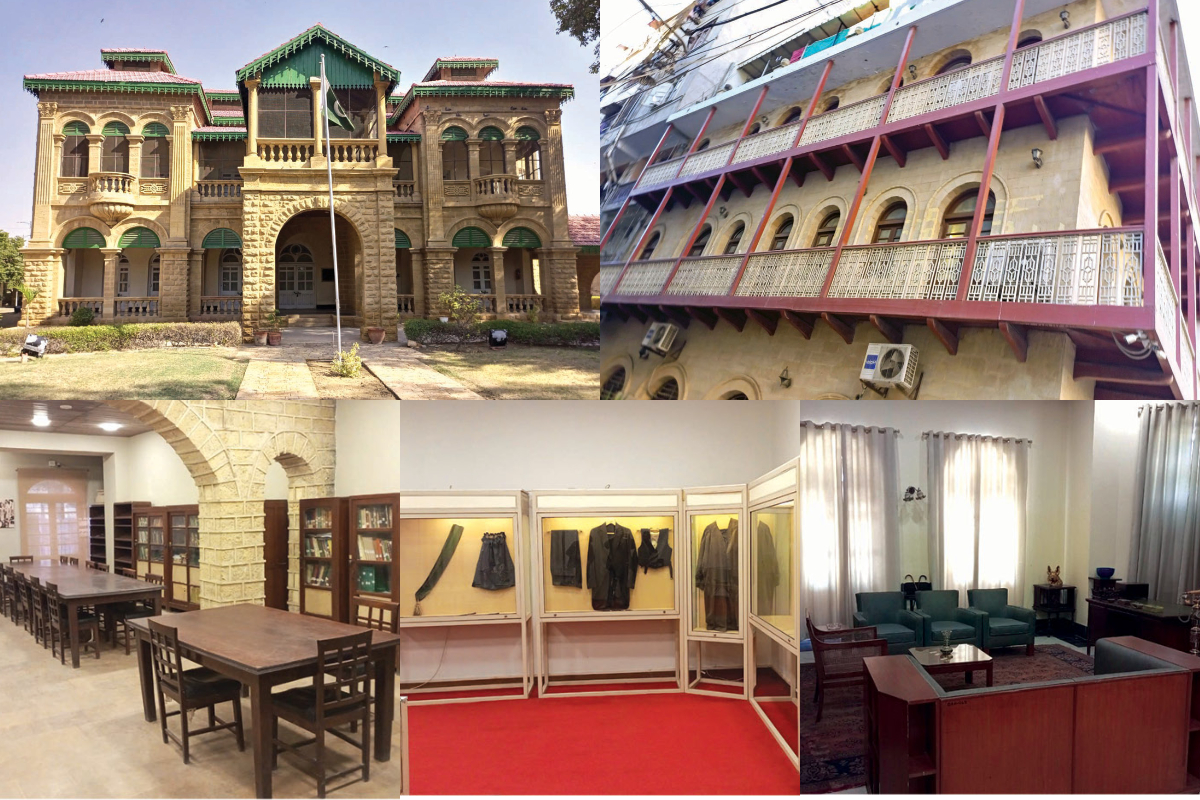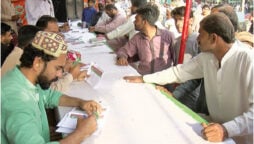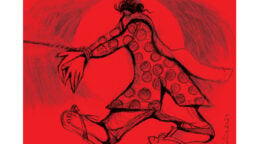
Jinnah’s Residence
The Quaid-e-Azam House Museum, purchased in 1943, stands as a memorial to the founding father’s legacy
Karachi: The Quaid-e-Azam House Museum, which spans 10,241 square yards, is a magnificent yellow stone structure in the middle of a vast open piece of land. It is commonly referred to as the Flag Staff House and is located at the intersection of Shahrah-e-Faisal Road and Fatima Jinnah Road.
This touching and impressive house embodies the dignified taste of Quaid-e-Azam Mohammad Ali Jinnah and serves as a source of inspiration for future generations. There is a serene and sublime atmosphere inside the building, and outside there is a lush green garden with tall trees and a fountain, where couches are placed.
The structure itself is not particularly large. There are three rooms on the ground floor and three rooms on the first floor. The width of two exterior rooms is 16 feet 10 inches. The first-floor rooms all have the same dimension and access to the verandah. An annexe has been converted into an auditorium and exhibition hall for debates, educational lectures, and audio-visual displays. There were also servant quarters, a stable, four garages, three guard rooms, and a kitchen, which have been converted into administrative offices.
The structure is made of limestone masonry, with wooden trusses supporting the roof, which is covered with red ceramic mangalore tiles on top. The staircase, which has been well maintained, is entirely made of wood and is a dark brown color. Beautifully coloured tiles are used on the ground floor, and wooden planks are used as floor coverings on the first floor. A large camphorwood box with skillfully carved sides is also placed in the first-floor bedroom. Furthermore, all of the sofa sets have been preserved in their original form.
The study room is furnished with a reading table, chairs, a table lamp, and some stationery. In one corner of the room, there is a resting sofa. Mr. Jinnah’s crockery is displayed on the shelves, which are made of high-quality wood and glass. Two luxury cars that have been parked in the garage belonged to Fatima Jinnah.
“We have done our best to keep the structure, interior of the building, and the like intact, as it is an eye-catching building from all sides that attracts visitors of all ages. Many visitors come here on a daily basis to see the pictures of the founder and her adoring sister that are hung on the inner walls of the house,” Manzoor Ahmed Kanasro, director general (DG) of Sindh antiquities and archaeology, culture, tourism, and archive department, said.
History of the House
The house was purchased by Quaid-e-Azam for Rs 115,000 from Sorab Kavasji Katrak, a former mayor of Karachi, on August 14, 1943, according to the sale agreement. At the time, the house was shown to be located on Bonus Road, an extension of Elphinstone Street, which is now known as Fatima Jinnah Road and Zaibunnisa Street, respectively.
According to the records, the owner until 1922 was Ramachand Hansraj Kutchi Lohana, with the British Indian Army later renting the house. From 1940 on, Brigadier Hartwell, Maj-Gen C. Dumfort, Maj-Gen N. G. Hind, and Gen. Douglas D. Gracy, who later became the commander-in-chief of the Royal Pakistan Army, had lived there.
Clearly, these army commanders were tenants of the new owner beginning in 1943, as rent receipts addressed to Quaid-e-Azam were discovered. Quaid-e-Azam’s personal belongings were transferred to the Flag Staff House from his house at 10-Aurangzeb Road, New Delhi, where he had lived during the full-fledged political activities leading to independence from the British Raj in September 1947, a month after the establishment of Pakistan.
Unfortunately, Mr. Mohammad Ali Jinnah did not get time to live in this house; there is also no authentic record of when he visited this place, but other reliable sources indicate that he visited it frequently.
Mr. Jinnah’s sister and political companion, Mohtarma Fatima Jinnah, who had lived with him in the Governor General House, moved into Flag Staff House on September 13, 1948, following his death. She lived here until 1964, when she moved to her own house in Clifton, the “Mohatta Palace” (Qasr-e-Fatima).
On July 9, 1967, Madar-e-Millat Mohtarma Fatima Jinnah passed away. Mr. Jinnah also owned a house and two plots of land in Malir and Maripur, Karachi.
By presidential decree, a commission was established to identify the Quaid’s personal belongings of historical significance. The identified relics, which were discovered in poor condition, were scientifically treated and restored for public display.
When Mr. Jinnah’s last surviving sister, Shirin Bai, died, responsibility for Flag Staff House passed to the newly formed “Quaid-e-Azam Trust,” which included Hashim Raza and Liaquat Merchant. By deed signed on February 14, 1985, the government purchased the Flag Staff House from these two trustees for Rs 5,107,000. The Quaid-e-Azam House, which spans 10,241 square yards, was then renovated.
Birthplace of Quaid
Wazir Mansion, a two-story building covering 150 square yards, is currently located in a congested area behind MA Jinnah Road or Bunder Road near the Karachi port, where Quaid was born on December 25, 1876.
Outside the house, where visitors enter, stands a magnificent statue of Quaid. This building belonged to Jinnah Poonja, Mr. Jinnah’s father, who came from Gujrat and frequently visited this area known as New Neham Road, which was a steel and leather business hub.
The house has many belongings of Mr. Jinnah, including a gorgeous chair, a rich library, suits, etc.
Furthermore, there is a controversy that Jinnah was born in Jhirak Thatta, but Jinnah’s family members deny this and claim that all of his siblings were born in Karachi.
Catch all the National Nerve News, Breaking News Event and Latest News Updates on The BOL News
Download The BOL News App to get the Daily News Update & Live News.












 Read the complete story text.
Read the complete story text. Listen to audio of the story.
Listen to audio of the story.